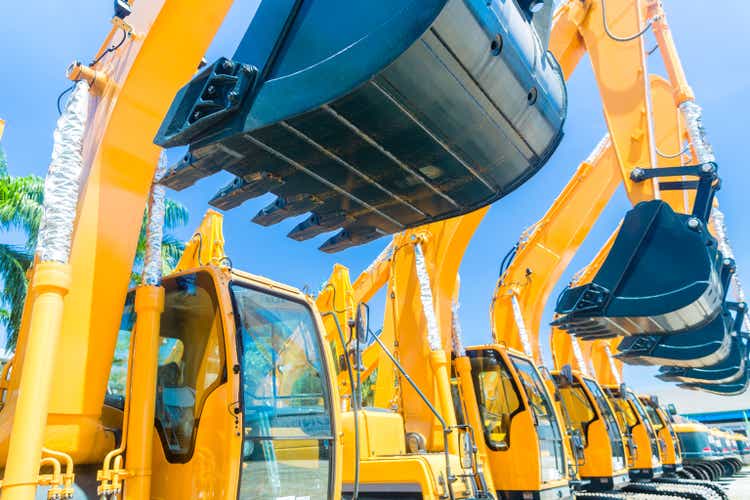kzenon/iStock via Getty Images
Published on the Value Lab 10/24/22
Herc Holdings Inc. (NYSE:HRI) is the more successful cousin of Hertz Global Holdings, Inc. (HTZ), spun off some years ago when Carl Icahn made his activist moves into the original parent. It focuses on non-residential construction, and despite rate hikes, that has been a very solid market, with infra and megadeal supporting their end-markets. They are a compounder, leveraging P/E roll-up logic as they consolidate the fragmented North American market. Deals are getting larger and longer-term, and the organic growth continues to be excellent on top of the high rate of consolidation.
The company is cheap despite its compounding economics, and this could be a stealth, resilient pick for investors to consider for their portfolio while levels are low. 66% of their debt is fixed and matures in 2027, and with mix effects seemingly the only pressure, things look otherwise pretty good.
Q3 Note
Herc is pretty focused on growing its fleet, mainly through acquisitions. This is especially apt because supply chain issues seriously affect some of the equipment they buy, and make it impossible to scale the fleet otherwise. Overcoming depreciation eve, the size of the fleet continues to grow by 10% QoQ thanks to acquisitions.
Despite the inorganic growth, fleet utilization is also rising even as the size of the fleets rises. The utilization grew from 42.5% to 45.3%, and the results end up being impressive.
Taking a look at the 36% rental revenue growth for the third quarter, about two-thirds of the growth was organic and a third from acquisitions. This validates our ability to grow our core business.
Pricing continues to be an important driver of revenue, and it is increasing due to lots of contract rollovers. Contracts are also now including adjusted ancillary charges that are covering fuel costs, which are otherwise operating expenses to Herc. Exposure is now 0 to fuel costs. Thanks to fleet size increases, utilization growth, and price increases, quite substantial increases YoY in total expenses by about 30% were more than covered. Income rose meaningfully by almost 50%. Part of this was also accretion in the acquisitions, which grew the assets in more local markets where margins tend to be higher. These positive mix effects could reverse slightly, as more local accounts may be more vulnerable to macroeconomic pressures than national, larger accounts. The share of local accounts grew from 58% to 60% QoQ.
Catalysts
The increment for HRI ends up looking positive. While we worried about construction activity going forward on the basis that higher rates might have slowed down even non-residential activity, apparently the amount of large-scale constructions happening in the EV space, the data center space, and infrastructure in general is rising as the private markets for these assets becomes even more fervent than before. Structurally, the still-growing amounts of dry powder in private markets are beginning to see accumulation in infra due to the more solid economics of infrastructure that are insulated in large part from macroeconomic forces and even inflation. Money is pouring so rapidly into the industry that multiples remain high, and expected returns are being driven down according to surveys, despite resilient fundamentals. The rise of megacap infrastructure could come as money goes from LBOs, growth equity and other places in alternative assets to infra, which is likely to win lots of share in allocations.
The other catalysts are recent hurricanes that usually drive a few million in incremental EBITDA and have led to 7% EBITDA growth guidance QoQ, which reflects more than typical seasonality.
In a more secular horizon, the incentive to rent rather than own has risen as it’s become impossible to purchase equipment in retail due to supply chain shortages. This up-steps their revenues with less likely reversion.
In addition to major demand sinks being present, there is also the matter of valuation. The company trades at a really low 9x P/E, which implies an 11% earnings yield. Given that there is resilience in the end-markets, even some pressure for growth on the infrastructure front, it’s quite a generous yield. Also, we are beginning to take the view that peak inflation may be coming. Major signs of loosening bottlenecks in supply chains are appearing, so the margin over risk-free rates, while already sufficient, may become greater as yields eventually fall over the next 10-year period, although markets continue to believe in their flat yield curve.


Be the first to comment